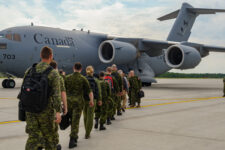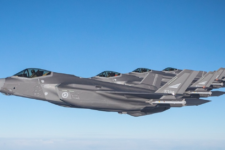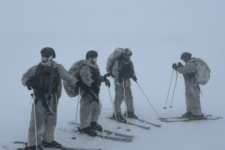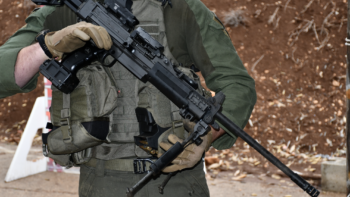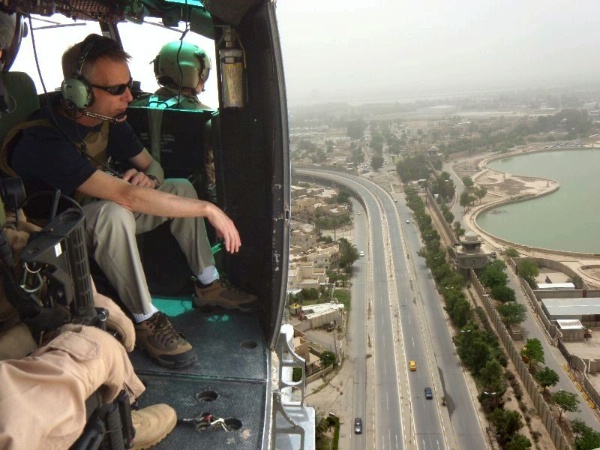
Jeffrey Culver, director of the State Department’s Diplomatic Security Service, flies over Baghdad in 2011.
[UPDATED with Gen. Hayden’s comments] Frantic diplomacy seems to have forestalled US military action in Syria – for now. But we stumbled into negotiations at the last minute, only after President Obama had threatened strikes and asked for a vote authorizing the use of force, when Secretary of State John Kerry made an off-the-cuff, off-message remark.
The confusion of the past week is just the latest example of an abiding problem, one that’s tripped America up not just in Syria but in Afghanistan and Iraq — and even, arguably, in cyberspace: The strength and size of the Department of Defense, and the weakness of civilian agencies, drives policymakers towards using the armed forces to solve every problem. It puts a heavy burden on the military that it’s generally eager to shake off, and it often militarizes US foreign policy. But when all you have is a hammer and a couple of broken screwdrivers, everything looks like a nail.
Or you can use the analogy of a fiddler crab: While the Defense Department and the civilian agencies are in theory co-equal arms of US policy, in reality one is way bigger and more powerful than the other.
“The current Syria crisis shows that when the president asks for options, the National Security Advisor dialed up the Secretary of Defense and the options were prepared at a planning cell in Tampa, Florida, at CENTCOM headquarters,” Amb. Lincoln Bloomfield told me. (Bloomfield has served under several Republican administrations in the Defense and State Departments and now chairs the board at the Stimson Center). “So instead of a political strategy to [secretly] induce Bashar al-Assad and his inner circle to leave the country in order to save themselves, [the] war crime prosecutions that the Arab League called for and the US could be leading, and information campaigns that would add significant momentum to the people who started this … none of this could come out of a military planning cell, so the president got 100 percent military options.”
The dominance of Defense Department “hard power,” along with the State Department’s traditional focus on nation-states instead of non-state actors, undermine US efforts not only in Afghanistan but across the board — especially in the fast-moving and amorphous world of cyberspace, said former CIA director Gen. Michael Hayden this afternoon at the Air Force Association’s annual conference.
Our current national security structure was created in 1947 and largely unchanged since, he noted. Of all the federal agencies, only Defense, State, and Treasury are core members of the National Security Council. “Are they the right players in the room?” he asked me rhetorically when I approached him after his remarks. ” In a world in which hard power means less, or hard power is less efficient, what about other folks who can contribute?”
In a crisis zone such as Afghanistan, “we’ve got to defend the people and we’ve got to help to build a civil society,” Hayden told me. “DoD does it fine. We do that all the time. State? AID? Agriculture? Totally unaccustomed to that kind of mission. They just have to get more practiced in it.”
But the military’s frustration with lagging civilian agencies has been building since the Balkan crises of the 1990s and only redoubled post-9/11. Some servicemembers are out of patience.
“I can’t take on the ‘whole of government’ approach,” said Maj. Gen. Bennet Sacolick of Special Operations Command at a recent conference at Fort Belvoir. “It’s a failed construct. It’s not in the art of the possible.”
“Policy and doctrine points towards ‘whole of government’ approaches, and yet reality continues to default to Pentagon-only approaches, with some participation of the interagency,” Bloomfield lamented.
“‘Whole of government’ operations are a fantasy because the non-defense parts of the US government are too weak to play their parts. We’ve know this is a debilitating problem for the past decade, and yet it hasn’t been fixed,” agreed Hoover Institution scholar Kori Schake (another former Republican national security official). “But the tasks urgently need doing, so what has happened is an enormous migration of responsibilities from the civilian agencies to the military. And that’s bad for the country, because these are inherently civilian tasks, and because of the message it sends to the world about militarization of American foreign policy.”
Even when the military is simply training and advising friendly forces, not fighting hostile ones, it can overshadow civilian efforts to strengthen civilian institutions. “‘Engagement’ is especially problematic when the military is building partner capacity that isn’t matched by strengthening civilian institutions in those countries,” Schake said, “because that actually facilitates the kind of deference to the military that we see in Egypt and Pakistan, which is actually not in American interest.”
In the worst case, our one-time partners use our training and weapons against us or their own civilians. Besides the oft-cited example of the School of the Americas and some of its graduates’ actions in Latin America’s “dirty wars” of the 1980s, Maj. Gen. Sacolick said some of the El Salvadorans he “personally” trained are now working with drug cartels.
Added another participant in the Fort Belvoir conference, “guys from my unit trained Mr. Doe” – Liberian Army sergeant turned dictator Samuel Doe, whose brutal rule led to almost 150,000 deaths – “before he took over Liberia.”
Setting aside those horrific cases, the day-to-day problem that the military-civilian imbalance creates for the US Army in particular is that it gets sent in on the ground to clean up messes that State, USAID, and other civilian agencies cannot. Admittedly, the administration’s January 2012 “Defense Strategic Guidance” takes nation-building, counterinsurgency, and other long-term ground campaigns off the table – at least, as long as we can avoid them. But the strategic guidance also puts a premium on “engagement,” sending small military teams to work with their counterparts abroad to build relationships, gather intelligence, and strengthen friendly forces through training, exercises, and arms sales.
The Army, Special Operations Command, and above all the Army Special Forces (where the Army and SOCOM intersect) have argued that their ability to interact with potential partners face-to-face, on the ground, makes them especially suited for a strategy of low-key engagement. That’s a central tenet of the still-evolving concept called “Strategic Landpower.” It’s also the justification for the Army’s “regionally aligned forces,” units that study specific regions of the world in training and stay on call to provide teams for training, advising, exercises, disaster relief, or other engagement as desired by the theater commander (aka the COCOM). The initiative is already underway with a brigade assigned to Africa Command (AFRICOM), and the Army is considering an eventual total of seven regionally aligned brigades.
In fact, the military’s capability to train, deploy, and sustain small training teams abroad vastly overshadows that of civilian agencies, much like the military’s ability to provide options for Syria or to do reconstruction in Afghanistan and Iraq. After a recent reorganization, a single Army brigade combat team consists of 4,000 to 5,000 people. For comparison, the entire State Department has only about 22,000 personnel.
“Early on there was some concern that we’d overwhelm them,” said one senior Army officer at the Fort Belvoir conference, “[but] none of the actions I described in Africa are being done independently of the country teams.”
Coordinating with the ambassador and his or her interagency country team, however, doesn’t change the fact that military assets dwarf civilian ones.
It’s not that the foreign service lacks for courage. Christopher Stevens, the ambassador to Libya murdered in Benghazi on September 11 last year, liked to jog around the capital, Tripoli, with a modest security detail so he could get the pulse of the city.
“There are many, many diplomats who I would put in the same outstanding category,” said Amb. Bloomfield. “We have diplomats who go in harm’s way and talk to the protagonists and report on it very effectively….That’s the kind of person who should lead the national effort to resolve the crisis.”
State’s problem, he argued, is not courage but resources. When Bloomfield was at State during the Afghan and Iraqi wars, “frequently the State Department did not have funds to execute its mission and we asked the Pentagon for help,” he said. “In the end, this pattern evolved into a transfer of missions from the State Department to the Pentagon since they had the money. We used to do all training and equipping out of the State Department, now the Pentagon has the training mission.”
“What’s the vision here?” asked one civilian participant in the Fort Belvoir conference during a vigorous discussion of engagement. “Are you making a bet that you aren’t going to get any help from the interagency?”
The responses included Sacolick’s “failed construct” blast. The senior Army officer quoted above put it more moderately: “Will they show up? Yes. Will they be, in our mind, adequate? No.”
Updated 4:50 pm with Gen. Hayden’s comments.
Out of INF, Army deploys Typhon weapon to the Philippines
“This is a significant step in our partnership with the Philippines, our oldest treaty ally in the region,” said Brig. Gen. Bernard Harrington, commanding general of the 1st MDTF.









